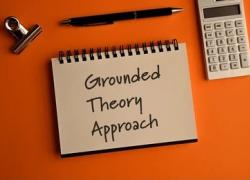How to write an effective abstract?
The PhD scholars and young researchers incessantly face difficulties while writing an effective abstract for the proposal, thesis or research article. It is not because there is something incredibly hard about it but because they really do not understand how to do it. They primarily do not make out when to write it and secondly they do not comprehend what should be incorporated in its body. Besides, the supervisors, reviewers, and examiners have their own lens to see through the world which makes it cumbersome for the novice researchers to get it done.
Another problematic area is the length of the abstract. For instance, the abstract of my PhD thesis was initially around 400 hundred words. One of the examiners observed that “the abstract is unnecessarily long and needs to focus on (a) what the study is about, (b). How the study was carried out, and (c) what were the findings, 50-300 words”. “The abstract should be in one continuous paragraph, not five”, he added. I did the needful. I briskly revised it and replaced it with an abridged version of 250 words. Meanwhile, another examiner suggested that the abstract represents the whole dissertation, therefore, it must cover all those segments of the study that has been covered throughout the dissertation, hence, it needs to be extended, comprehensive and elaborate for the marketability of the research. I had no option but to revise it again to extend it to 350 words.
This is one of the few bizarre scenarios the PhD scholars used to brass while writing the draft of an abstract for the PhD thesis. A comprehensive format for writing a perfect research proposal has been given at “What should be included in the Research Proposal?” This blog post is aimed at providing some useful guidelines for the PhD scholars, academics and novice researchers about the subject matter with focus on how to write an effective abstract?, what should be included in it?, how long it should be?, when to write it?, number of paragraphs to be included, the key features and finely what makes an effective abstract?.
What is an abstract?
An abstract is a self-contained, short and powerful statement that describes a larger scholarly work. It provides a brief summary of what is covered in the research proposal, thesis or paper. Its components vary depending upon the specific requirement of the university, discipline and level of studies. A conventional abstract imbibe the scope, purpose and results of the research study.
How to write an abstract?
To begin with, writing an abstract, it is important to finish with the manuscript of the proposal, thesis or research paper, first. This should be followed by writing a summary that delineates the purpose, research problem, research design, outcomes and conclusion of the research work. Once it is done, the final step is to format the abstract.
What should be included in an abstract?
Subject experts have a growing disagreement of opinion that what should be included in the body of the abstract. Some suggest that the abstract is a mini paper that must stand alone. It should consist of the introduction, aim, experimental work, results and conclusion. It helps the readers to instantly determine to read the entire piece or not. Therefore, it should have introduction, problem statement, procedures, results and conclusion. Since brevity is the essence so each of these parts, it should not have more than one or two sentences each. Here, the selection of each and every single word is critically important for conveying the desired message.
I suggest the abstract needs to contain 03 important words IMF. Here, I stands for Introduction, M for Methodology and F for Findings. This is more for the purpose of interpreting and remembering things at the fingertips rather than anything else. The abstract may include possible implications of the research study and some direction for the future work as recommended by some authoritative sources.
What should not be included in an abstract?
It is advised to refrain from referring information in the abstract that is not in the document. Besides the acronyms, abbreviations and symbols are not suggested to be used. Besides the in-text references are not recommended to be used in it.
How long should be an abstract?
The abstract should be a single paragraph, between 150 and 250 words and usually be no longer than a page (around 300 words). For a scholarly article, it needs to be not more than 150 words or as suggested by the guidelines of the concerned journal and it should be confined to a single paragraph. For a research proposal, not more than 200 words and for a PhD thesis, it can be extended up to 300 words having multiple paragraphs.
When to write an abstract?
The abstract is generally written at the very end of the academic and scholarly writings. However, there are some raw suggestions that one should write a tentative abstract at the early stage and finalize the full length once the entire manuscript is finalized.
Essential features of a good abstract
An abstract sums up, the major aspects of the entire research endeavour in a prescribed format encompassing the overall purpose of the study, the research problem being looked into, the basic research design and the major findings of the study. It should primarily answer the key questions such as, why?, how? and what?. Hence, it needs to be precise, coherent, readable and compact. It is also important to state clearly the objectives of the research study, concisely delineate the method employed for data collection and its analysis, run over the results, and finally state the principal conclusion of the research.
What makes a perfect abstract?
An effective abstract needs to have one well-written, properly developed and skillfully drafted paragraph. It should be logical, consistent and concise to be able to hold water solely as a conclusive unit of information. It embraces all the essential scholarly ingredients of a full-length research article, such as the background, purpose, focus, methods, results and conclusion. It is written in a lucid, articulated and transparently clear language easily understandable to a wider audience. Focusing on the issues rather than people, it needs to have a passive structure in order to report on the findings. It uses the language of the original paper, often in a more simplified form for the more general readers.
Conclusion
Abstract is a short summary that is given at the beginning of a scholarly article or thesis that states the purpose of the paper and its main conclusion, hence utmost care should be taken to write it as per guidelines for the academic writings to make it meaningful, engaging and captivating for a wider audience apart from subject-specific readers.


















